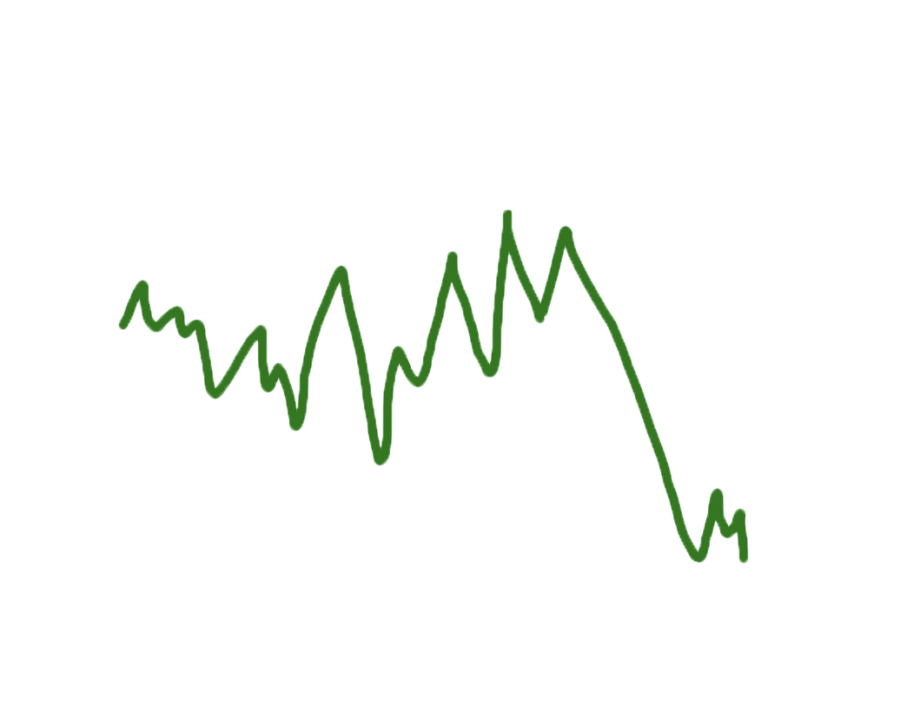The future of crypto currency
Crypto has taken the world by storm, where is it headed?
March 28, 2023
According to kapersky.com, cryptocurrency is simply digital currency that anyone can trade without the intervention of banks. Rather than carrying cash, cryptocurrency allows you to make transactions and deposits from anywhere with a device. However, trading data is safely encrypted, so personal information is not available on the public domain.
Cryptocurrency units are created via a process defined as “mining.” This process uses computer power to decipher math problems, thereby generating coins to deposit in their cryptographic wallets. It is important to remember that there is nothing tangible about cryptocurrency- it is all digital.
Well known currencies include Bitcoin, Ripple, Litecoin and Ethereum. Buying crypto can be boiled down to four simple steps.
First, distinguish between whether you want to buy from a broker or the exchange itself. It is important to research before purchasing cryptocurrencies. Next, fund your crypto account with standard currencies (USD, British Pound, etc.). Cryptocurrency is generally not bought with credit cards. Before investing, always look out for information from crypto exchanges regarding fees. Then, you place an order for your crypto. Researching different investment routes with crypto is essential before beginning the investment journey. It is always better to diversify investments to minimize money loss.
With crypto, you can buy cars, lavish items and even insurance in certain countries (not in America).
Timeline of Cryptocurrency:
1983: Concept of crypto created (eCash)
2009: Bitcoin created
2010: Bitcoin valuation
2012- Coinbase launched
2017 – Bitcoin peak
Nov 2022 – Fall of FTX
2022- crypto winter
(Source: thevincent.com)
Why did Crypto collapse?
According to cnbc.com, Crypto’s meteoric rise proved to be its subsequent downfall. Crypto investors believed the currency would persist in the face of inflation, existing as its own parallel to a new “gold standard.” However, when the Fed raised interest rates in 2022 to combat inflation, Crypto prices tanked. With them came the Crypto market, bringing the world into what is now referred to as a “Crypto winter.”
Looking back, what investors speculate was Crypto’s fatal flaw was the interconnectedness of the Crypto market. Last July, a string of failures among select Crypto firms and currencies, like Terra and Luna, revealed that when one link of the market failed, the others spiraled into the same cycle.
One casualty of this fire—and perhaps the most significant Crypto failure—was the fall of FTX, a crypto company valued at $32 billion. FTX owner Samuel Bankman-Fried was exposed for fraud in early November 2022 after the disappearance of more than $8 billion in company investments. The fallout caused the crypto market to lose billions.
Currencies like Ethrereum and Bitcoin hit an all-time low on Nov. 9, hours after the fall of FTX. The global “Crypto winter” has persisted into 2023, bringing into question whether the currency can survive.
Senior Asha Gudipaty filmed a podcast episode with Upper School economics teacher Kristen Blevins on the fall of FTX and its ripple effects. She said the company’s bankruptcy has ushered in a more hesitant period of crypto investing, but will not necessarily mark its end.
“Right now, everyone’s trying to recover if they have perhaps invested and lost money,” Gudipaty said, “but I do think that looking at cryptocurrencies that are even more established than FTX, there’s this mutual trust that’s not easily breakable, so a crypto spring is inevitable.”
Since COVID, the price of crypto has gone from $60-$70 thousand to $20-$30 thousand.
The future of crypto
Considering crypto’s unique features, students like Gudipaty believe it will persist in future economies.
“I think it might bounce back and I do think it has the potential of still being a field that people invest in because of its unique aspects, like the privacy aspects or the fact that it’s not something that’s controlled by a government,” Gudipaty said.
Dr. Simon Mak, professor of entrepreneurship at SMU’s Cox School of Business, is a former Silicon Valley entrepreneur who started researching blockchain technology more than a decade ago. He created the Blockchain in Entrepreneurship course at SMU to apply the technology that fascinated him and to teach students how to invest in crypto.
“I was intrigued by how blockchain technology can be used to rapidly create startups that solve problems in the world,” Mak said. “That’s why I created this course.”
He founded the Genesis Blockchain Academy to allow professors around the world who do not have an engineering background to teach his course material at their universities.
For crypto to sustain itself, Mak said, it must reframe itself as a currency with specific, specialized applications to society.
“Right now, because it was so easy to make money speculating on cryptocurrency, some of the best and brightest have dedicated time and money to making applications with crypto,” Mak said. “I’m hoping people will actually try to solve problems with crypto, and that will drive the price of crypto up.”
Mak recommended people who want to invest in crypto have a background in investing, particularly in stocks and bonds.
“I would not recommend anyone jumping into crypto with zero experience,” he said.
For those with experience, Mak said it is better to invest in currencies that add value to society. Currencies like FTX did not do that, which is why they have fallen, he said.
Crypto has especially significant benefits when it can be used in apps, he said.
“Having researched for over 10 years, I concluded that there are very few applications that actually need blockchain technology,” Mak said. “Taking an existing industry and converting it to crypto has basically failed.”
He encouraged younger people to consider thinking of new ways to apply blockchain technology.
“Instead of trying to convert existing systems into crypto,” he said, “think of brand new businesses.”





